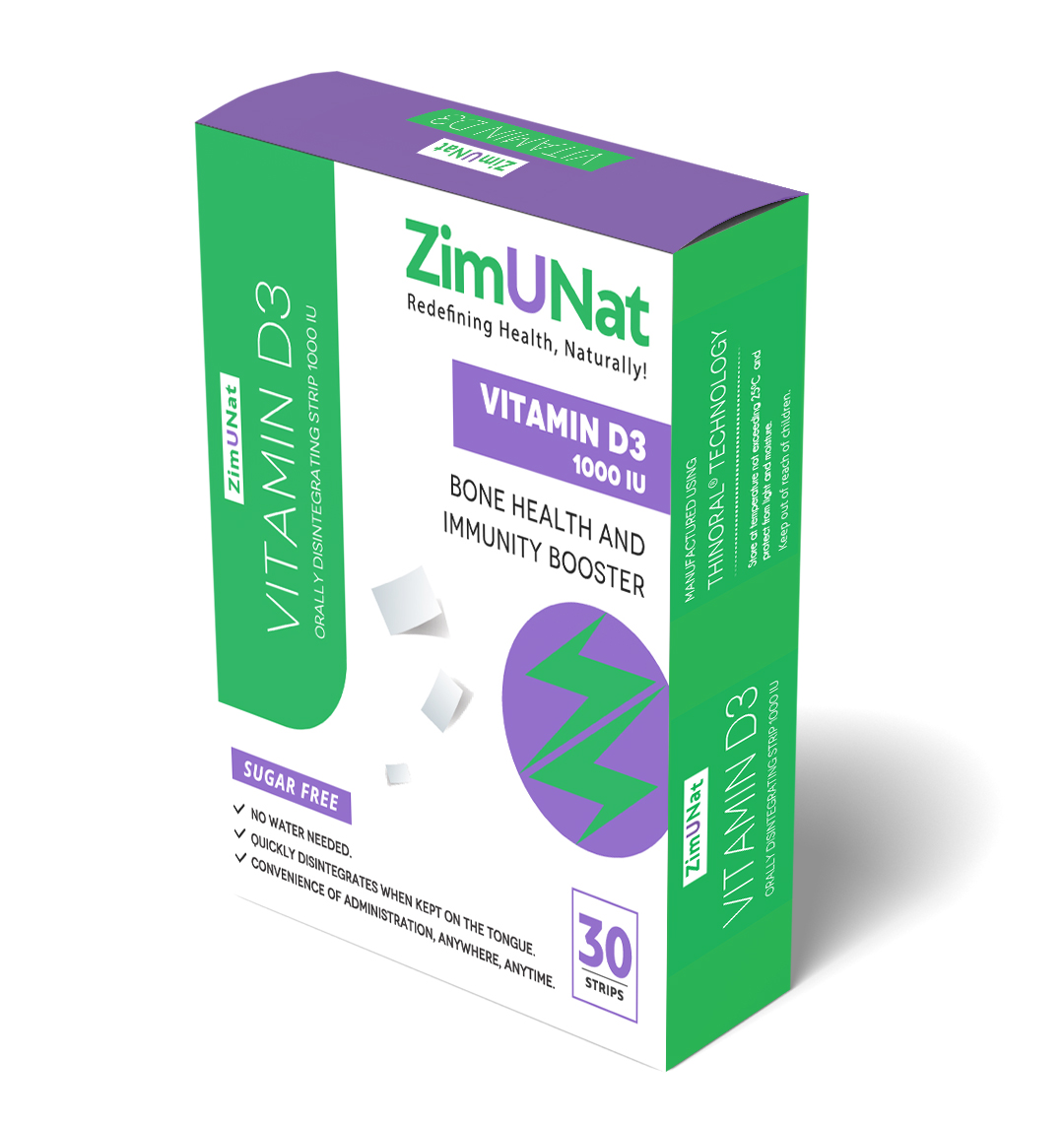Vitamin D3
For years, we all have understood the importance of calcium in our body. Calcium is responsible for maintaining the bones and the mobility function of the body. We can only imagine what would happen if our musculo-skeletal system is not able to support our primary body movements due to impairment and damage.
But one important thing to understand about calcium is that it is not absorbed in the body only in its raw form. For bone mineralization, the calcium needs a catalyst in the body and those catalysts are essentially provided by elements such as Zinc, Magnesium and Vitamin D3.
Minerals and vitamins are like salt in the food. Salt is added in minute quantities in food, but forget adding them once, and the entire food loses its taste value. The minerals have a similar role to play in the various nutrient absorption functions.
While zinc and magnesium are easily available from natural sources, the source of Vitamin D3 is rare- or in other words, usually available from the morning sunlight.
It is customary for the medical professionals to tell you while advising a calcium dosage to advise you to wake up early and walk in the sunlight. The reason is that usually, there is awareness that the Vitamin D3 component is missing from the calcium source.
And if you fail to take that early morning sun bath, chances are all that calcium is leading to calcification in the gall bladder or kidneys, forming a gall stone or a kidney stone in time. Let’s understand how we can make the right choices about ensuring proper Vitamin D3 in our body.
How is Vitamin D3 made in the body?
Essentially, Vitamin D3 is produced in the body, after adequate sun exposure, and works more like a hormone. The production of Vitamin D3 is dependent upon a specific hormone in the body called Cholecalciferol.
It is something that is produced by the skin layers when exposed to sunlight. But wait a minute. Can I go out in the sun at 10:00 am in the morning and expect that my Vitamin D3 levels can be replenished? Of course not! It doesn’t happen that way.
The cholesterol found in the layers of your skin converts into Cholecalciferol when the skin is exposed to ultraviolet light. That too, not the one that is available after the day break, but the one which is available at twilight only (between 06:00 am to 07:00 am).
Cholecalciferol is then converted into calcifediol (also known as calcidiol or 25-hydroxy Vitamin D) in the liver and finally into calcitriol (1-25 dihydroxy Vitamin D) in the kidneys.
On one hand, we are dependent on the sunlight for our Vitamin D3 requirements, but on the other hand, we try to protect our skin from the same sunlight to prevent skin darkness and sunburns. A sunscreen lotion of SPF 8 reduces the chances of Vitamin D3 by about 95%.
In order to identify the Vitamin D levels in the body, a test for 25 (OH) D of 25-hydorxy Vitamin D is required. The optimum levels of Vitamin D3 in the body are in the range of 50ng/Ml (125 nM/L).
Unfortunately, the sun exposure is the only available source of Vitamin D3 for the human species. Unless of course, you can also grab yourself a great nutritional supplementation.
How does the Vitamin D3 work in the body?
As discussed earlier, the calcium in the body is required to support the musculo-skeletal system. But it doesn’t end there. Calcium has other functions as well.
For example, the heart requires calcium (about 3% – 7%) in order to circulate the blood through all parts of the body. The heart cannot change these requirements for the blood circulation system, and the body has to be continuously supplied with the required calcium levels in order to continue the process. While we continue taking the calcium sources in the body, it is absorbed in the bones due to the catalytic action of the minerals – zinc, magnesium and the Vitamin D3. These elements ensure that the mineral form of calcium (calcium mineralization) which can be directly absorbed in the bones is possible.
If the Vitamin D3 in the body is insufficient, the chances are that the process of calcium mineralization will not occur. Consequently, the calcium source in the body will turn into a waste that the kidneys and the gall bladder will have to push out from the body. In non mineralized form, such calcium starts depositing at the passages of the kidneys and gall bladder system and hence, it is the cause of gall stone or kidney stones.
What can happen with Vitamin D3 deficiency in the body?
The new generation may possibly not have heard of the disease – Rickets. For the older generation who believe that Rickets has gone, its not yet. It is on the rise again. The possibilities are, it has been long forgotten in the layers of osteoporosis or arthritis as the symptoms are quite similar.
Bowed legs, pelvic malformation, leg and skeletal fractures, severe dental problems, damage to enamel and increased cavities in the teeth are some of the symptoms. If not treated properly, these damages can be permanent.
Your potato chips, wafers, and lip-smacking snacks that you so joyfully savour – crackers, cheese puffs and tortilla chips are made up of Olestra which degenerates the Vitamin D levels in the body. The fizzling sound of aerated drinks seems to be fascinating, but will it continue to be as fascinating if we were to tell you, it reduces the capacity of the bones to absorb the Vitamin D3? Food for thought, eh!
No sunlight exposure with a nutrient robbing fast foods is a deadly combination to deplete your bone health over time.
A whopping 25% of men and 42% of women beyond the age of 50 years are diagnosed with Osteoporosis in New Delhi alone as per the report of Indian Journal of Endocrinology and Metabolism.. Some of the health risks due to calcium deficiency are:-
- Rheumatoid Arthritis.
- Osteoarthritis & Osteoporosis.
- Rickets
- Age related macular degeneration
- Fibrosis
- Minute bone fractures.
- Heart risks.
- Dental degeneration
How Can I maintain a healthy dose of Vitamin D3 in the body?
The work life today necessitates more of indoor activities, reducing the sunlight exposures to drastic minimal. With Covid-19 regulations becoming the new life normal, most people have been reduced to work from homes, bringing down the outdoor activity even more.
If it would have been a decade ago, having a supplement as a support for healthy lifestyle could have been a matter of choice, but is it now? Anymore? The rules of health have changed. Are we ready to accept it yet?
Especially, when we are reduced to our homes and are uncertain about our old routine to get back to normal, there is no way we can continue to expect the same lifestyle with a changed environment. A good Vitamin D3 supplement in our regular diet, is beyond doubt, a necessity.
An ideal dosage would be as under:-
- Children up to the age of 3 years – should be taking it from the mother.
- Between 04 yrs – 12 yrs – 650 IU – 1000 IU
- 13 yrs and beyond – 1500 IU – 2500 IU
- Pregnant Women – 1500 IU – 2500 IU

Zimunat Vitamin D3 is a nutraceutical supplement with patented ThinOral technology where the delivery mechanism is simple and easy to administer. It consists of oral thin film strips which when placed on the tongue melt in a few moments. These strips taste really good and can be taken anywhere anytime.

